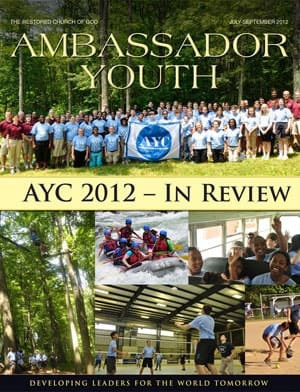Imagine putting a New Zealander, Kenyan, Nigerian, Dutchman, Zimbabwean, Indian and others from numerous countries together in a room and asking them to greet each other. It would probably sound like: âKia Ora, Kei te pkehea roe?â âNiajez uraerdeleaje.â âBurka laya kuke!â âHallo, hoe gaat het met je?â
These are just a few of the ways you say âhelloâ in Maori (New Zealand), Swahili (Kenya), Hausa (Nigeria), Dutch (Netherlands), and Shona (Zimbabwe). In Hindi (the language of India, my home country), âGood morning, how are you?â is written, âसà¥à¤ªà¥à¤°à¤à¤¾à¤¤ à¤à¤ª à¤à¥à¤¸à¥ हà¥à¤.â
What a communication gap!
Because the cultures, social environments, and normal meals of these nations are very different, one would naturally think that those from various countries would have great difficulty getting along. Yet this was not the case at AYC!
There were, however, many interesting conversations that resulted from our cultural differences.
Take for instance the food. The wholesome and nutritious meals served at camp were one of my favorite parts of the two weeks. In India, people usually eat cooked lentil curry called âdalâ and cooked vegetables. But at camp, we were served dishes such as tater-tot casserole, lasagna and Mexican eggs. These were all deliciousâbut quite different from typical Indian meals.
Other campers had their own standard foods. For example, Nigerians have a tube-like vegetable called a âyam,â which is rich in carbohydrates and starch. Kenyans cook bananas, rice and green beans as a typical meal. One camper from Zimbabwe said her lunch of ground maize (corn) mixed with meat and vegetables called âsadza,â was very different from any of the AYC lunches.
National traditions and social etiquette also vary from country to country. For instance, in India, false religion and superstition abound. Some of these include not crossing the street after a black cat, not washing your hair on Tuesday, and not eating meat for fear of ingesting a reincarnated being. A staff member from Ghana also shared an interesting tradition. She said people there are not allowed to pass or serve food with their left hand as this is considered a sign of disrespect. Such traditions and others were at times topics of discussion among campers.
A personâs social environment is something that shapes him and affects who he will become. After traveling to camp, I learned that Americaâs social environment is unique from what is experienced by campers from nations such as Nigeria and Kenya, as well as where I live.
These countries, and even India to some extent, have stable family units. The general lifestyle of people there differs from that of Western countries. There is still a lot of folklore, folk dances, and family story time in some tribes, which is different from typical Western lifestyles in which every family member does what each wants. Some families in Western countries nowadays do not even eat dinner together.
In addition, clothes worn by people living in America, Australia, New Zealand, and Canada are quite similar, but people in African and Asian subcontinents have unique clothing. They usually wear outfits with bright colors and elaborate stitching designs. Personality-wise, I found people who come from these regions are just as colorful and warm as the clothing they wear. Nigerians, for example, are considered among the happiest people in the world despite their often dire circumstances.
Though there are and always will be differences in the way all of us at AYC talk, dress and eat, among other aspects, one thing keeps us togetherâwe are part of Godâs true Church. This is the reason we are able to look past cultural differences all while encouraging and building up one another.
I cannot wait to gather with campers and staff from every corner of the globe next year!


















